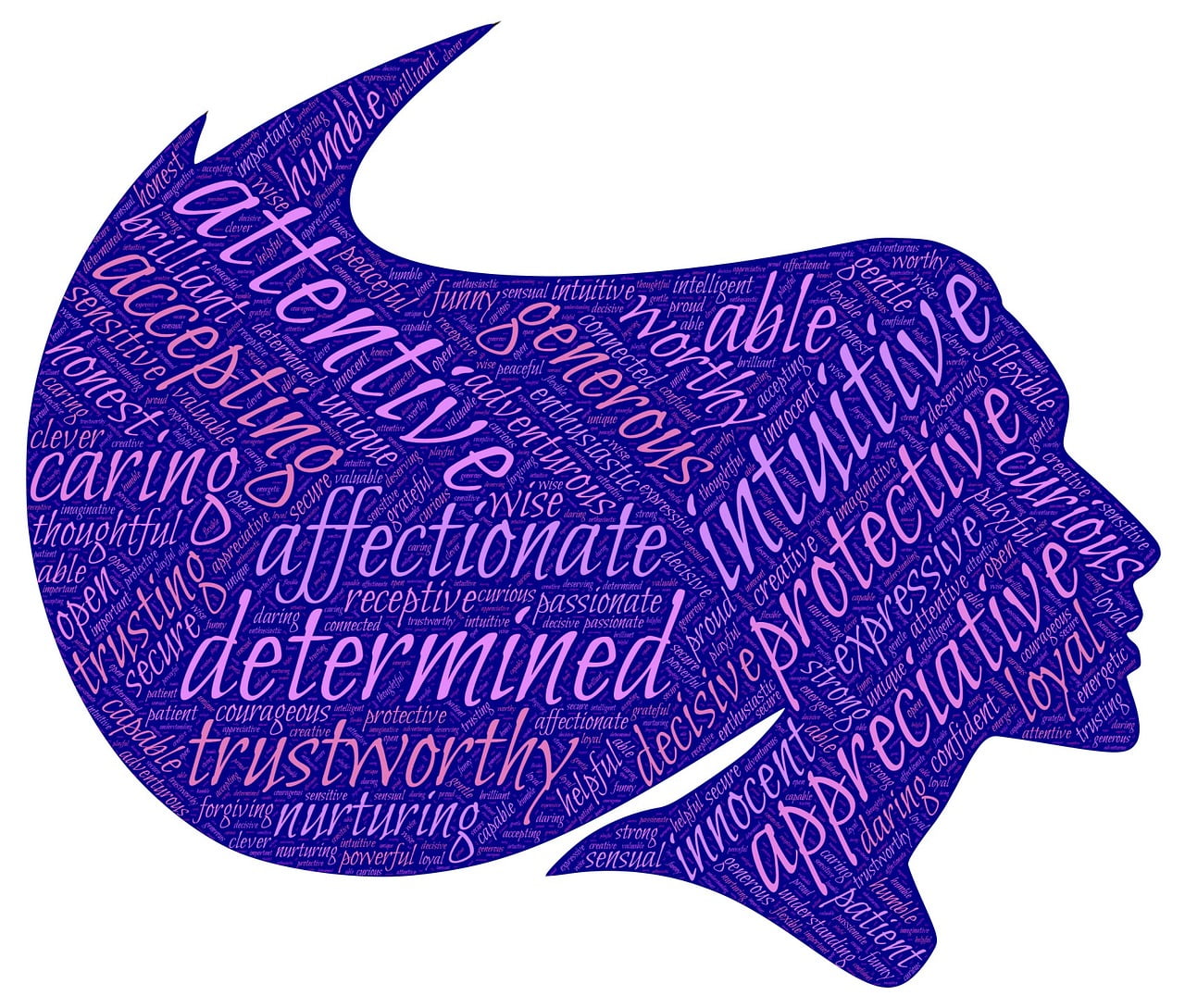Women and Leadership in the United States: Background & Issue
The concept of leaders and leadership continues to evolve in the modern world. Part of that evolution involves the change in who is eligible to be a leader. In looking at leadership opportunities for females, the evolution has been slow. In Rhodes book, entitled Women and Leadership (2017),[1] she looked at the history of women leaders, from the beginning of the 20th century going back 2000 years and found a total of only 850 female leaders worldwide, with many of those being considered leaders based on their connections to powerful males as mothers, wives, daughters, or mistresses. In looking at the modern world, while there has been progress, there are currently only around 20 female world leaders, and half of those are the first woman to hold their countries’ highest office[2].
Looking specifically at the United States (US), the 2016 Presidential election highlighted both the progress women have made and some potential double standards in this country. The results of the election, between Donald Trump and Hillary Rodham Clinton, were close, with Clinton actually winning the popular vote, but they also highlighted how many people judge men and women differently as leaders[3]. In a February, 27, 2016 article by Frank Bruni in The New York Times titled “If Trump Changed Genders” he noted that a “woman with his personal life, public deportment and potty mouth wouldn’t last a nanosecond in a political campaign – or for that matter in a boardroom.” In a Pew Research survey conducted in 2015, four in ten Americans indicated a double standard for women seeking to climb to the highest levels in politics or business, requiring women to do more than their male counterparts[4]. This double standard becomes additionally perplexing when you consider that in a 2009 poll commissioned by the White House Project, a majority of Americans indicated they were comfortable with women as top leaders in all sectors, from academia and business to the media and military[5]. What it seems to indicate is while men and women feel they are not biased in looking at women as leaders, they actually are.
Working Women
The history of women and working goes as far back as human history. However, for much of human history, women have been relegated to specific types of work that were often unpaid and deemed less significant[6]. This is important to note, as the issue with women in leadership roles has to do with perceptions and stereotypes of women that go back to the early days of human existence where the man was the strong hunter-gatherer and defender while the woman tended to the home and the family and were often considered naturally inferior[7]. Of additional significance in looking at the historical context of women’s roles, is the influence they were able to use even as they were considered less than their male counterparts. Going back as far as Ancient Rome, it is noted how some women were able to manipulate their husbands, lovers, or other men to impact decisions[8]. In other words, women throughout history may not have often risen to the top echelon in organizations, but they still found ways to instruct, guide, and direct decisions, often without men even being fully aware.
Looking specifically at women in the workforce in the US, the Department of Labor established the Women’s Bureau on June 5, 1920. It focused on promoting the welfare of wage-earning women. The establishment of this bureau ties to World War I when women were needed in large numbers to work in factories and other industries to support the war based on men leaving these jobs to serve in battle. 1920 was also the year that women were granted the right to vote with the 19th Amendment to the US Constitution. Women’s desire to hold a broader variety of roles than in earlier history, ties to them gaining the right to vote and both world wars[9]. During World War II, the female labor force in the US grew to 19 million, with women making up 36.1% of the workforce by 1945. At the war’s conclusion, many of these women did not want to stop working or necessarily return to those jobs designated as female professions such as teaching, nursing, domestic, or clerical work[10].
The Equal Pay Act of 1963 and the Civil Rights Act of 1964 were both supposed to help end gender discrimination in the workplace by making it illegal to hire or compensate differently based on ethnicity or gender. “Proponents of these Acts hoped that once the doors of workplace opportunity were opened for women, they would, in a short time, acquire the requisite experience to rise to positions of prominence in American businesses.”[11] From 1950 to 2000 women increasingly joined the workforce going from about one-third working at the end of World War II to 60% by 2000, or 66 million women working[12]. Women have made perpetual strides in their numbers in the workforce and the types of industries in which they work, making up 48% of the US workforce as of 2017 and over 52% of the management and professional roles[13]. However, their ascent to executive positions continues to be very slow even with as much experience and more education than their male peers. As of the beginning of 2018, women only account for 5.2% of CEOs of S&P 500 companies, down from 2017, and in 2016, the percentage of US businesses with no women in senior roles was at 31%[14].
This lag in women’s ascent to senior-level positions can be seen across industries. Women make up 44% of the overall labor force of the S&P 500 companies and 36% of the first or mid-level managers but are only 25% of the senior-level and executive ranks. This percentage gets worse in the financial services industry where women are 54% of the labor force, but only 29% of senior and executive level roles. In the legal field, women are 45% of associates but only 22% of partners. In academia, women hold over 50% of the instructor positions, but make up only 37.5% of the tenured positions and 27% of college presidents[15]. In looking at the tech industry, consistently noted as having few women in top positions, as recently as 2016, 43% of the 150 highest-earning public companies in Silicon Valley had no female executive officers[16]. The US government is no better. In the 115th US Congress, women make up 19.1% of the 435 seats in the House of Representatives, and 21% in the Senate, even though women are over half of the US population. Hillary Rodman Clinton was the first woman to be nominated by a major party for the Presidency in 2016, almost 100 years after women were granted the right to vote[17]. What all of these examples reiterate is that while women have joined the workforce in vast numbers for over half a century, across all industries, they still struggle to rise-up within organizations, even with several generations of workforce exposure to women in a variety of roles.
As women have joined the workforce and attempted to move up the ladder in their careers, there have been, and continue to be, barriers. In the 1980s, the term “glass ceiling” was coined, which has been followed with “glass staircase” and “glass cliff.” These terms all have to do with the seemingly invisible barriers women face in the workplace tied to their gender and perceptions of their leadership ability[18]. The terms “glass ceiling” and “glass staircase” focus on the barriers women face as they try to climb the organizational hierarchy, while “glass cliff” focuses on the concept that when women are given the opportunity for leadership positions they are often the most precarious roles with an organization[19]. Major contributing factors to these barriers are gender stereotypes as well as leadership stereotypes rooted in the masculine ideal of leaders, since for much of history that has been the example.
Of equal concern is that in 2016, the percentage of US businesses with no women in senior roles rose to its highest level since 2011, 31%. This is not just a problem for women but also for organizations as baby boomers retire and the age cohort following them is 18% smaller. US organizations are going to need a resupply of capable leaders as the workforce shrinks, and therefore need to ensure they are drawing and developing all capable leaders regardless of gender[20].
These statistics become additionally concerning when you consider that in the US women have earned more bachelor’s and master’s degrees than men since the mid-1980s and have earned more doctorate degrees than men since 2006[21]. This would seem to indicate that the struggle women have in ascending to top positions in US organizations must involve other factors including potential prejudice and unintentional bias towards women and is not due to lack of educational preparedness. One major factor impacting women’s ability to ascend to senior level positions within organizations is their disproportionate responsibility to home life whether that be raising children or taking care of aging family members. Family obligations play a role in work-life balance, particularly for women[22].
Statement of the Problem
Why do women continue to struggle to get to executive roles within US organizations? Von Hippel, Wiryakusuma, Bowden, and Shochet noted their belief it tied to gender-based stereotypes this way, “Women’s competence in leadership is often undervalued in part because of gender-based stereotypes. The prevalence of gender-based stereotypes in the leadership domain may place females in situations where they risk fulfilling, or being judged in light of, these negative stereotypes.”[23]
This double standard and double-edged sword for females seems to require them to find a way to balance positive female personality stereotypes with the demand to exhibit leadership traits tied to masculine attributes. As already noted, Women make-up over half of the management and professional level workforce, yet only account for about 20% of senior level roles even with similar work experience and more education than their male peers.
Solving this problem requires active and ongoing discussions by all people and organizations about potential conscious and unconscious biases that may be holding women back both by others and within themselves. Everyone has to be involved as this is not a women’s problem! This is a people problem that organizations must work to solve to ensure they are not discriminating and help ensure the success of their organization by hiring, developing, and promoting the best people.
[1] Rhodes, D. L. (2017). Women and leadership. New York: NY: Oxford University Press
[2] Evqua (2018, February 20). 2018, women and political leadership – Female head of state and heads of government. Women in International Politics.
[3] McDonough, K. (2016, December 20). Here is the final popular vote count of the 2016 election just in case you want to feel bad. Splinter.
[4] Pew Research Center (2015, January 14). Women and leadership: Public says women are equally qualified, but barriers persist.
[5] White House Project (2009). The White House project report: Benchmarking women’s leadership.
[6] Eagly, A. H. & Carli, L.L. (2007). Through the labyrinth. Boston, MA: Harvard Business School Publishing;
Rhodes, D. L. (2017). Women and leadership. New York: NY: Oxford University Press
[7] Hoyt, C. L. & Murphy, S. E. (2016). Managing to clear the air: Stereotype threat, women and leadership. Leadership Quarterly, 27(3), 387-399;
Junker, N.M. & van Dick, R. (2014). Implicit theories in organizational settings: A systematic review and research agenda of implicit leadership and followership theories. Leadership Quarter, 25(6), 1154-1173
[8] Bryman, A., Collinson, D., Grint, K., Jackson, B., & Uhl-Bien, M. (Eds.). (2011). The SAGE handbook of leadership. Thousand Oaks, CA: SAGE Publications Inc.
[9] Women’s Bureau (2012). Our history: An overview of 1920-2012. US Department of Labor.
[10] Lockhart, N. & Pergande, J. (2001). Women who answered the call: World War II as a turning point for women in the workforce. Journal of Women’s History, 13(2), 154-157.
[11] Hoobler, J. M., Lemmon, G., & Wayne, S. J. (2011). Women’s underrepresentation in upper management: New insights on a persistent problem. Organizational Dynamics, 40, 151–156.
[12] Toossi, M. (2002). A century of change: The U.S. labor force, 1950–2050. Monthly Labor Review, 15–28.
[13] Kalysh, K., Kulik, C. T., & Perera, S. (2016). Help or hindrance? Work-life practices and women in management. Leadership Quarterly, 27(3), 504–518.
[14] Catalyst. (2017, March 14). Women CEOS of the S&P 500. Catalyst Knowledge Center;
Netter, S. (2017, March). Closing the gap: Business executives, educators and leaders – male and female – are working together toward a more gender-diverse workforce. Delta Sky, 77–86.
Zarya, V. (2018, May 21). The share of female CEOS in the Fortune 500 dropped by 25% in 2018. Fortune.
[15] Catalyst. (2015, July 9). Women in academia. Catalyst Knowledge Center;
Rhodes, D. L. (2017). Women and leadership. New York: NY: Oxford University Press
[16] Diehl, A. B., & Dzubinski, L. M. (2016). Making the invisible visible: A cross-sector
analysis of gender-based leadership barriers. Human Resource Development Quarterly, 27(2), 181–206;
Warner, J., & Corley, D. (2017, May 21). The women’s leadership gap. Center for American
Progress.
[17] Catalyst. (2017, February 15). Women in government. Catalyst Knowledge Center
[18] Diehl, A. B., & Dzubinski, L. M. (2016). Making the invisible visible: A cross-sector
analysis of gender-based leadership barriers. Human Resource Development Quarterly, 27(2), 181–206;
Eagly, A. H., & Carli, L. L. (2003). The female leadership advantage: An evaluation of the evidence. Leadership Quarterly, 14(6), 807–834;
Hoobler, J. M., Lemmon, G., & Wayne, S. J. (2011). Women’s underrepresentation in upper management: New insights on a persistent problem. Organizational Dynamics, 40, 151–156.
[19] Evers, A., & Sieverding, M. (2014). Why do highly qualified women (still) earn less? Gender differences in long-term predictors of career success. Psychology of Women Quarterly, 38(1), 93–106;
Ryan, M. K., Haslam, S. A., Morgenroth, T., Rink, F., Stoker, J., & Peters, K. (2016). Getting on top of the glass cliff: Reviewing a decade of evidence, explanations, and impact. Leadership Quarterly, 27(3), 446–455.
[20] Beeson, J., & Valerio, A. M. (2012). The executive leadership imperative: A new perspective on how companies and executives can accelerate the development of women leaders. Business Horizons, 55(5), 417–425
[21] United States Census Bureau. (2017, February 02). FFF: Women’s history month: March
- Newsroom
[22] Rhodes, D. L. (2017). Women and leadership. New York: NY: Oxford University Press
[23] Von Hippel, C., Wiryakusuma, C., Bowden, J., & Shochet, M. (2011). Stereotype threat and female communication styles. Personality and Social Psychology Bulletin, 37(10), 1312–1324.
By Jennifer Priddy
 Jennifer Priddy’s ability and experience in education, program and organizational management enables her to effectively interact with all levels of employees in successful and engaging business and learning environments. She is persistently passionate at finding opportunities to help individuals and organizations grow. With an eagerness to bring out the best in current and future leaders, using a unique combination of educational experiences coupled with project and operational management expertise – she understands the balance of qualities required to ensure individuals and organizations can be successful.
Jennifer Priddy’s ability and experience in education, program and organizational management enables her to effectively interact with all levels of employees in successful and engaging business and learning environments. She is persistently passionate at finding opportunities to help individuals and organizations grow. With an eagerness to bring out the best in current and future leaders, using a unique combination of educational experiences coupled with project and operational management expertise – she understands the balance of qualities required to ensure individuals and organizations can be successful.
Piddy currently serves as a passionate Business & People Developer, and is vastly experienced in the field of Organizational Development, with specialties in – and not limited to : Operational Excellence, Continuous Process Improvement, Strategic Planning, Change Agent, Curriculum Development, Mentor & Coach. Connect with her on LinkedIn.






